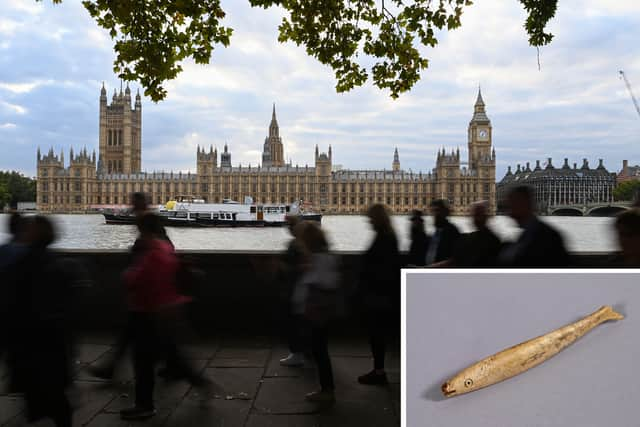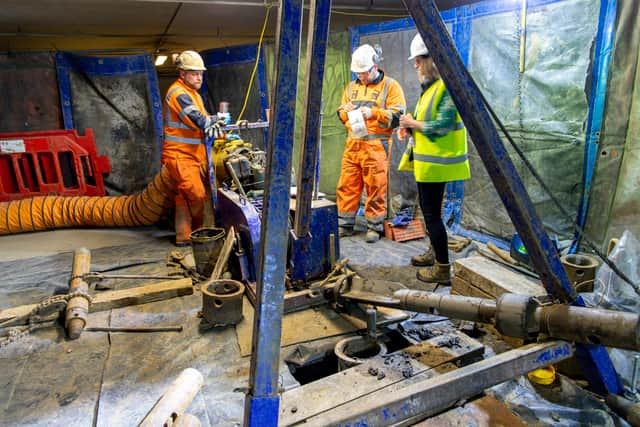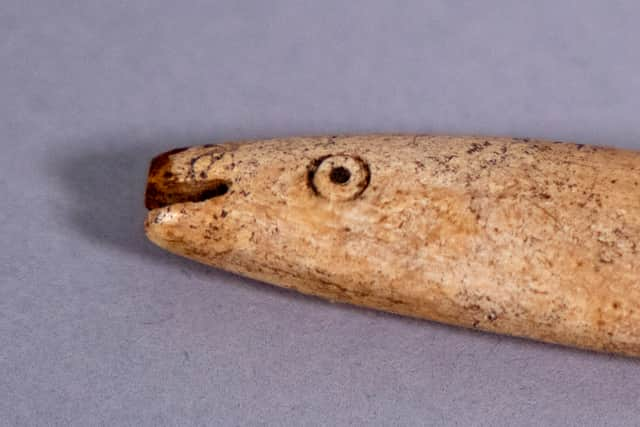Good Friday: Houses of Parliament excavation workers find antique carved fish under House of Lords
and live on Freeview channel 276
Marking Good Friday, photos of an antique carved fish found during excavation work at the Houses of Parliament have been released.
A milestone 7,500 hours of surveying work has been completed since July 2022 at the site - officially called the Palace of Westminster - as part of the restoration project.
Advertisement
Hide AdAdvertisement
Hide AdDuring the work, a number of finds have been made, including the unearthing of an intricately carved 200-year-old fish made from animal bone - most likely from a cow, horse or similarly sized animal.
The fish, a gaming counter possibly used in 18th-century card games, was found by Roland Tillyer, senior geoarchaeologist at Museum of London Archaeology (MOLA), while monitoring the digging of a borehole deep in the earth under the House of Lords’ Royal Court.
It had been whittled to shape and polished, the mouth is cut with a saw and the “ring-and-dot” eye was inscribed with a centre bit tool or compass. The eye may originally have been filled with black wax, or a similar dark substance, to stand out against the bone colour.
Other discoveries included the position of hidden voids that were built as ventilation shafts in the original design and the condition of critical utilities.
Advertisement
Hide AdAdvertisement
Hide AdThe find follows the possible discovery last November of a section of the original medieval Thames River wall, which is believed to run underneath the length of the Houses of Parliament.


David Goldstone, CEO of the Houses of Parliament Restoration and Renewal Delivery Authority, said: “We continue to make exciting and historic discoveries as we survey the Palace of Westminster. This major milestone of 7,500 hours of completed intrusive surveying work is a testament to the hard work of the hundreds of specialists brought in from across the UK, helping us in this national effort to save the iconic Palace of Westminster for future generations.
“We’ll take the important data from this extensive research to inform our future restoration plans for the building, ensuring that we tackle critical issues and preserve and protect the building and the thousands of staff and visitors that use the building every day.”


Michael Marshall, MOLA finds team leader, said: "This carved bone fish is a gaming counter. Counters like this were commonly used at gaming tables in Britain during the 18th and 19th century and were used as tokens for scoring.
Advertisement
Hide AdAdvertisement
Hide Ad“A famous literary description of this practice comes from Jane Austen’s Pride and Prejudice (published in 1813) where Lydia Bennet is described as winning and losing fish while playing games of ‘lottery tickets’.”


Diane Abrams, Houses of Parliament Restoration and Renewal Programme archaeology lead, said: “It is amazing that this wonderful gaming token was found while monitoring a single borehole through archaeological deposits at Royal Court.
“It certainly highlights the value of the Palace's 'hidden' archaeology beneath its buildings and spaces and how even a single find such as this can contribute to its overall sense of history and our literary past.”
